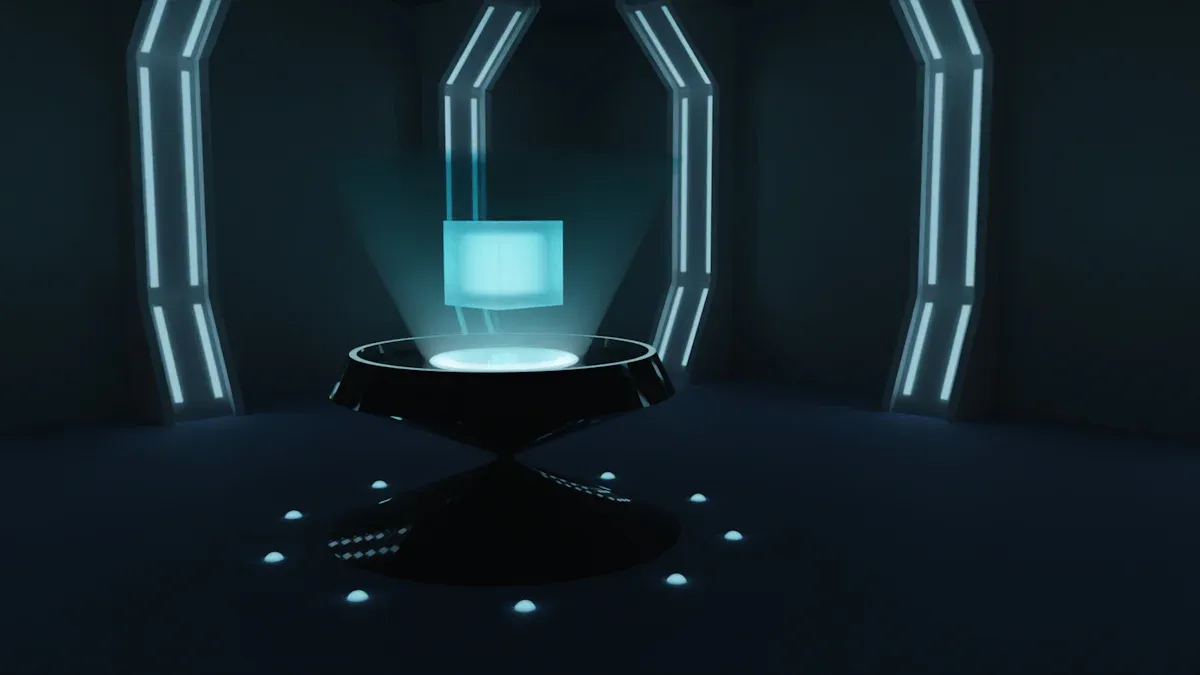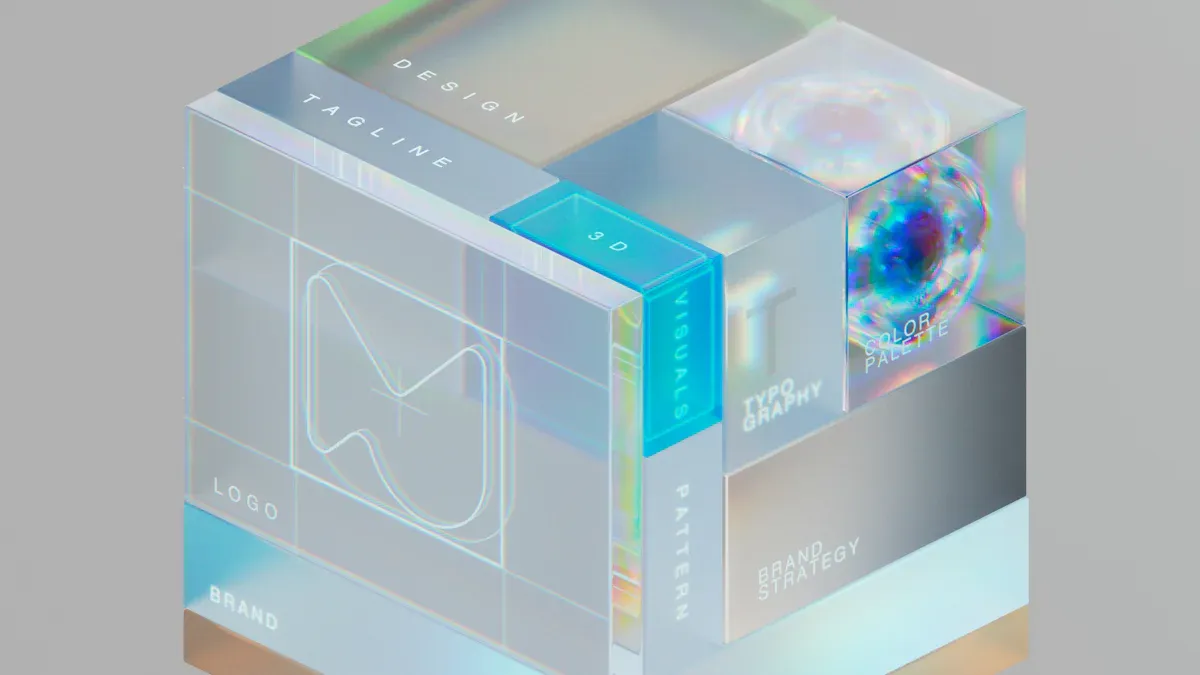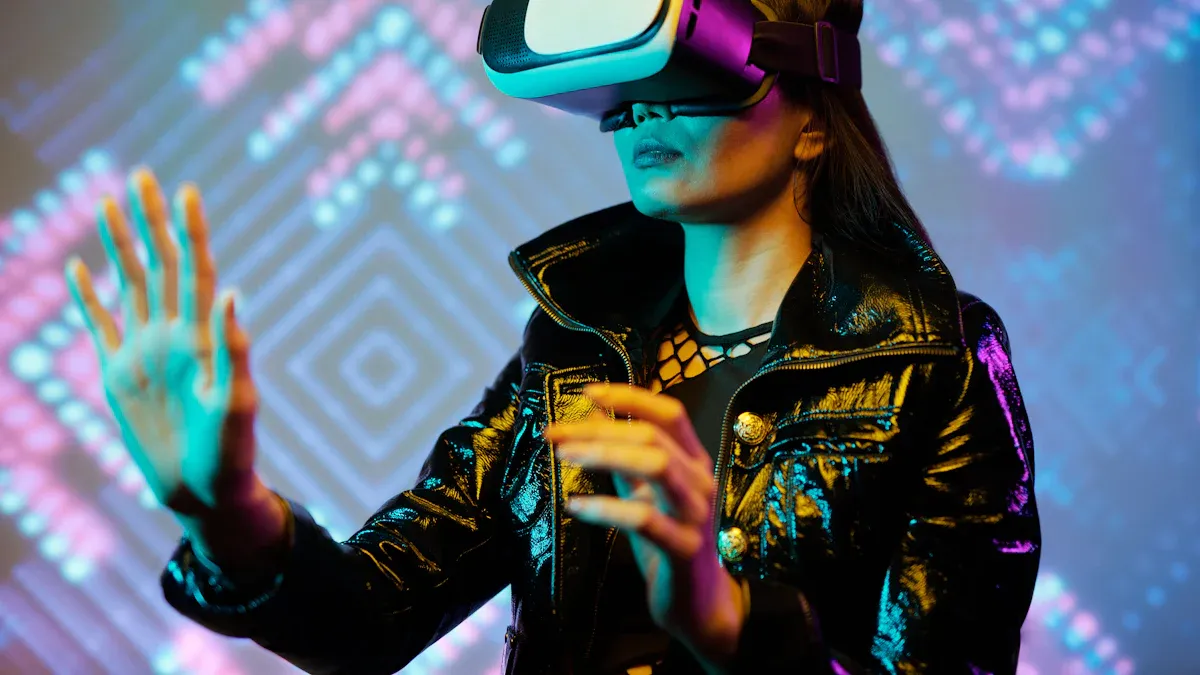


+86 184 7636 4380



Jul. 24, 2025

Hologram box innovations are changing business and entertainment in 2025. New technology lets groups show real 3D images. People do not need special glasses or headgear. Many companies use these displays for interactive ads, medical images, and museum exhibits. Now, people can enjoy new ways to use products and watch shows. The entertainment and media field is growing fast. It has a 25.4% yearly growth because of holographic shows.
Organizations and people find new ways to connect, work better, and enjoy more senses with this technology.
| Sector/Region | Key Statistic/Projection |
|---|---|
| Entertainment & Media | CAGR of 25.4% through 2034 |
| Retail | CAGR of 24.3% through 2034 |
Hologram boxes show real 3D images that float in the air. You do not need special glasses to see them. This makes it easy and fun to watch and interact.
Businesses use hologram boxes for better meetings and product demos. They also help with teamwork. This saves time and helps people talk more clearly.
Entertainment uses holograms for concerts, games, and shows. These events feel more real and fun for people watching.
New technology like AI, tactile feedback, and light-field displays help holograms look better. These things make the experience feel more real and interesting.
The hologram market is growing fast. Many companies are making new ideas. But high costs are still a problem before holograms are everywhere.

A hologram box is a machine that makes 3D images float in the air. People can see these images from many sides. They do not need to wear special glasses. The hologram box uses new technology to make things look real. Businesses and places for fun use this device. They show products, art, or even people in cool new ways.
The hologram box mixes projection and optical tricks. It uses LED lights, mirrors, and special screens to show images from all sides. These screens react to light and make things look deep and full. The images seem to float because of light interference and diffraction. This lets people see 3D pictures without extra gear. The hologram box keeps everything in a small, controlled space.
Top hologram boxes are different from old displays. They give real 3D images and let people interact.
| Feature | Leading Hologram Boxes | Traditional Display Technologies |
|---|---|---|
| Image Type | Real 3D images float in the air | 2D images on flat screens |
| Viewing Angle | You can see from all sides | Only from the front |
| Light Source | Laser or LED makes sharp, bright images | Regular lights show 2D images |
| Screen Requirement | No screen is needed | Needs a screen |
| Interactivity | Touch or gesture controls are often included | Usually you cannot interact |
| Portability & Size | Can be small or very big | Often heavy and hard to move |
| Optical Components | Uses special mirrors and lenses | Basic optics only |
| Applications | Used for ads, fun, learning, and AR | Used for movies and slideshows |
| Space Requirements | Small and does not need open space | Needs space for the image to show |
A normal hologram box has some main parts:
Projection screen: It is see-through and shows clear images.
Projector (holographic emitter): It uses lasers or LEDs for 3D pictures.
Central control unit or PC: It runs the software for the images.
Laser light source: It gives bright and saves energy.
Spatial light modulator: It shapes the light for good detail.
Optical elements: Mirrors and lenses help focus the hologram.
All these parts work together. They make a fun and special way to see images.
Businesses use hologram box technology for better meetings. People see 3D images of coworkers or clients, even from far away. Big booths like PORTL and ARHT Media show full-size holograms at events and training. These booths use special lights and cameras for live images. Small, portable boxes let teams share 3D objects on video calls. This helps people talk about products or ideas like they are together. Companies use these systems for remote customer service, video banking, and telemedicine.
Hologram telepresence helps teams work better, saves travel time, and cuts carbon emissions.
A hologram box changes how companies show products. Instead of flat pictures, businesses use 3D holograms that float in the air. Customers can walk around and see every side of a product. Many stores use these boxes as digital mannequins or to show new gadgets. At trade shows, people touch screens to interact with the hologram and learn more. This makes the experience fun and easy to remember. Studies show interactive 3D demos make people watch 40% longer and 88% feel excited. These displays help customers trust what they see, so there are fewer returns and more sales.
Teams use hologram boxes to work together, even from different places. In small meeting rooms, these boxes show 3D images for everyone to see and discuss. Devices like Microsoft HoloLens 2 let users join meetings, share files, and add notes in 3D space. People can move, resize, and interact with these holograms during calls. This makes teamwork more active and helps everyone understand ideas better. Teams use them for remote inspections, support calls, and training. Large hologram setups are rare in offices, but small boxes make teamwork easier and more fun.
Teams can:
Share screens as holograms
Join meetings with 3D content
Add 3D notes and markups
Work together on real-time projects
Many companies and groups have found success with hologram box technology:
The St. Louis Aquarium uses a Proto Box for an otter show.
Retail stores use hologram boxes to display products in new ways.
Spirit Halloween stores use Holofans for cool marketing displays.
Riot Games and Disney use large holograms for events and movie launches.
These examples show how different industries use hologram boxes to get attention, improve customer experiences, and stand out from others.

Hologram box technology has changed how concerts happen. Now, artists and event planners use holograms for new shows. These performances mix real people and virtual images. Every event feels different and special. The table below shows how famous artists and events used holograms to make concerts better:
| Artist/Event | Description of Hologram Use | Impact on Concert Experience |
|---|---|---|
| Whitney Houston Hologram | Computer-made hologram starred in "An Evening with Whitney" tour | Gave fans a new concert with a performance after her passing |
| Tupac Shakur at Coachella | Hologram performed with live artists in 2012 | Mixed virtual and real acts, making the show feel real |
| Michael Jackson at Billboard | Used advanced hologram for a cool 2014 show | Made the show look amazing and hard to forget |
| ABBA Hologram Avatars Tour | Digital avatars made with motion-capture tech | Let the band perform virtually and reach more fans |
| Roy Orbison Hologram | Live shows used hologram projections | Brought old and new together, changing concert style |
Holopresence uses strong projectors and holocloth. This makes big, floating 3D holograms that move with music. Concerts can have remote presenters as live holograms. Artists can perform in many places at once. Event planners can use these displays for small or big shows. This makes concerts more fun and easy to remember.
Many big events have used hologram box systems. Some examples are:
DVE Holographic made a Liam Neeson hologram for the War of the Worlds musical.
Huge hologram stage shows happened in Las Vegas, Branson, and Macau.
DVE’s touring hologram systems let live performers use open stages and save money.
Big production companies use these systems for concerts, plays, and theater.
These examples show how hologram boxes help artists reach more fans and make new kinds of shows.
Gaming is now more real with hologram box technology. Players step into a game world that feels real. The Hologram Room is a small space that shows life-sized holograms. Up to five players can join each game. They see 3D game characters and objects around them. This setup helps stop motion sickness and lets players look at each other.
Game makers use Unity and Unreal engines to make games for these systems. The Arcade Room version lets up to four people play with a big hologram joypad. Players can take photos or videos and share them online. The system is simple to set up, so it works in arcades or at home.
Hologram box gaming lets players play with the game and each other in new ways. The experience feels more social and real than regular screens or VR headsets.
Hologram box entertainment has changed how people join in at shows and exhibits. Now, people can talk to AI-powered hologram avatars. These avatars answer questions, give tips, and guide users. Museums use life-sized holograms of famous people from history to make learning fun.
Stores use hologram brand ambassadors to greet shoppers, show products, and give advice. Visitors can use hand signs or voice commands to control the holograms. This two-way talk makes the experience more personal and fun.
New ways for audiences to join in include:
Talking to hologram guides in real time
Learning by doing with 3D mentors
Watching lifelike shows by artists and history figures
Trying out products with interactive demos in stores
These features help people feel more involved and excited. Hologram box technology makes entertainment come alive and makes every event or visit special.
Artificial intelligence helps make 3D images look real. Computers use deep learning and neural networks to build holograms fast. Tensor holography teaches computers to make 3D images from many samples. Laptops and phones can now create holograms in just milliseconds. These images have depth and lots of detail. AI also makes it easier on your eyes and more comfortable to use. Now, people see high-quality holograms right away, even on simple devices.
Augmented reality and Holographic eXtended Reality change how we use hologram displays. Swave Photonics showed new HXR tech at CES 2024. Their system uses tiny pixels, smaller than dust, for sharp images. These pixels store and control light very well. The tech fits into smart glasses and heads-up displays. New AR devices use special parts for wide views and real 3D images. Users can change the focus and fix vision problems. Swave’s HXR platform removes big parts and lowers costs. This makes AR feel more natural and easy to use.
Tactile feedback lets people feel vibrations in the air when using holograms. This makes actions feel real and helps users know they made a choice. Studies show mid-air vibrations help people feel more sure. People find these systems easier to use, even if they move slowly. Tactile feedback makes the experience more fun and helps everyone join in. Good gesture tracking lets users touch and move holograms. It feels like touching real things.
Tactile feedback will soon be a main feature. It will make hologram experiences more fun and easy for everyone.
Light-field displays make images look real from every side. Companies like Light Field Lab use panels with billions of pixels. These panels make bright, sharp, and colorful images. People see 3D pictures without glasses. New designs use liquid crystal gratings and light modulators. This makes images bigger and easier to see. Some systems let people use lasers to interact with floating images. Many big tech companies work on these displays for games, learning, and live talks.
Light-field displays now give:
Sharp images with lots of pixels
Wide angles to see from many sides
Real-time ways to interact
Support for live events and meetings
Modern holographic projectors are smaller and easy to carry. Some fit in your hand and use batteries or USB power. Head-mounted projectors are light and let you move around. These changes make it easy to use holograms anywhere. Research is making the equipment even smaller. Now, people use these devices at home, in school, or while traveling.
The market for holographic displays is growing fast. Experts think more people will want 3D visual technology soon. Businesses and entertainment both use these displays more each year. Companies spend money to make displays brighter and easier to use. Entertainment uses them for live shows, sports, and TV. Schools and hospitals use them for training and patient care. Big tech companies like Microsoft, Google, and Facebook invest in this area. Startups like Voxon and Magic Leap bring new ideas for everyone.
Many companies are leading in holographic technology.
Holoconnects in Europe makes life-size displays for events and stores.
ARHT Media in Canada builds holographic telepresence for meetings and classes.
AV Concepts in the USA made the Tupac Shakur hologram at Coachella.
Base Hologram and Digital Domain in the USA create artist holograms for live shows.
Voxon Photonics in Australia has displays you can see from any side.
Microsoft, Google, and EON Reality work on business, health, and education.
RealView Imaging in Israel makes 3D medical holograms for doctors.
These companies help shape the future of hologram technology.
The industry has some big problems to solve. Equipment and making costs are high, so small businesses struggle. You need special skills and materials to use these systems. Some places do not use holograms much because they cost a lot and workers need training. There is not enough content and few rules, so growth is slow. Poorer countries have even more trouble because of high prices. Companies must make better technology and lower costs to help more people use it.
Experts think holographic displays will be everywhere soon. Live shows will use holograms for cool effects and to show famous people again. Movies and TV will look more real with these displays. Schools and training will get better with 3D lessons, especially in science and medicine. As prices go down and tech gets better, more people will use holograms at work and home. The future is bright for this technology, with new ideas coming every year.
Hologram technology is making work and fun different. Companies and event planners notice better teamwork and more interest from customers. They also find new ways to share ideas with others. Experts say to plan early and set up the system with care. It is smart to pick speakers who know what they are doing. Holograms should help current tools, not take their place. Companies need to think about what the audience wants. Using new tech like 5G makes things run fast and smooth. Learning about new updates helps groups stay ahead of others.
People can view 3D images, join virtual meetings, play games, and watch concerts. Stores use hologram boxes for product demos. Museums use them for interactive exhibits. Students learn with 3D lessons.
No special glasses are needed. Hologram boxes use advanced lights and screens. People see 3D images with their eyes alone.
Prices vary by size and features. Small models start at a few thousand dollars. Large, advanced systems can cost much more. Businesses often rent them for events.
Tip: Renting a hologram box can save money for short-term needs.
Yes, some portable models fit in homes. People use them for games, learning, or video calls. These devices need a power source and a safe spot.
Hologram boxes use safe LED or laser lights. They do not harm eyes or skin. Users should follow the maker’s safety tips for best results.
Please leave your request for any product you wish. We will be happy to search it for you in our databases or offer its custom synthesis
